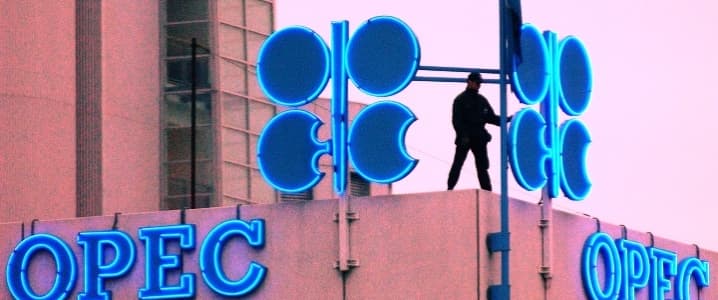Early in October, OPEC’s chief, Mohammed Barkindo, appeared to be unfazed by growing U.S. crude oil shipments to OPEC’s key market, Asia. The official said he expected OPEC exports bound for the East will continue to expand in the coming years, eventually hitting 22 million bpd in 2040, up from 14.5 million bpd in 2016.
Yet underneath the confidence, there seems to be growing worry about these U.S. shipments because they’re growing too, and nobody is tying U.S. shale producers’ hands with any production-cutting arrangements aimed to stimulate prices.
In fact, the threat to OPEC from U.S. shale oil just got more serious as it became clear that the cartel and its partners are planning to extend their own agreement until the end of 2018. This means that until the end of next year, OPEC, Russia, and their partners will continue to supply 1.8 million fewer barrels of oil per day to global markets—or at least a figure in that vicinity, as compliance is still far from 100 percent across the group.
Meanwhile, as prices improve, U.S. shale production continues to grow, albeit guardedly, and Asian refineries are a top destination for oil exports. In early October, U.S. oil exports hit a record high of 1.98 million bpd, helped by the growing spread between Brent and WTI, which makes U.S. crude more attractive pricewise. Today, the spread was over $6.50.
Analysts seem to agree that U.S. oil exports will only continue to grow as U.S. producers move to take positions held for decades by Middle East OPEC members, whose hands are tied in responding to demand because of the agreement. That’s particularly true for the cartel’s leader, Saudi Arabia, which in August announced that it would cap its exports at 6.6 million bpd and has more or less made good on its word, despite, according to comments from Saudi officials, growing demand for its light crude. Related: Tensions Rise As Iraq Halts Kirkuk Oil Exports
U.S. oil is a light grade, which makes it a good substitute for Saudi grades. In fact, thanks to the combination of factors such as price, demand patterns, and grades, U.S. oil exports could by 2022 meet 5 percent of non-U.S. crude oil demand. This means they would rise to 4 million bpd by that year, according to an executive from Enterprise Partners.
In other good news for U.S. oil exports, China’s top refiner—and the biggest in the world—Sinopec is studying two projects in the United States. One of these envisages Sinopec, in partnership with two local companies, building a crude oil pipeline from the Permian to the Gulf Coast to export the commodity. The Chinese refiner is nothing if not ambitious: The pipeline will end at a terminal capable of loading VLCCs, which can carry up to 2 million barrels of crude.
OPEC should indeed be worrying about U.S. shale, even if it’s been so far treating it with a reckless aloofness. According to several analysts interviewed by CNBC’s Sri Jagarajah, OPEC should start working on making its crude more competitive if it wants to keep a solid presence in Asia. Or, as one of these analysts, Wood Mackenzie chief economist Ed Rawle, put it, "Traditional OPEC suppliers will need to watch this space and price their crude competitively as up to 50 percent of incremental crudes into Asia could come from non-OPEC."
By Irina Slav for Oilprice.com
More Top Reads From Oilprice.com:
- U.S. Gasoline Demand Climbs To Record Highs
- New U.S. Sanctions Threaten Russian Oil Projects
- The Oil Company That Lost $800 Billion In Shareholder Value


















